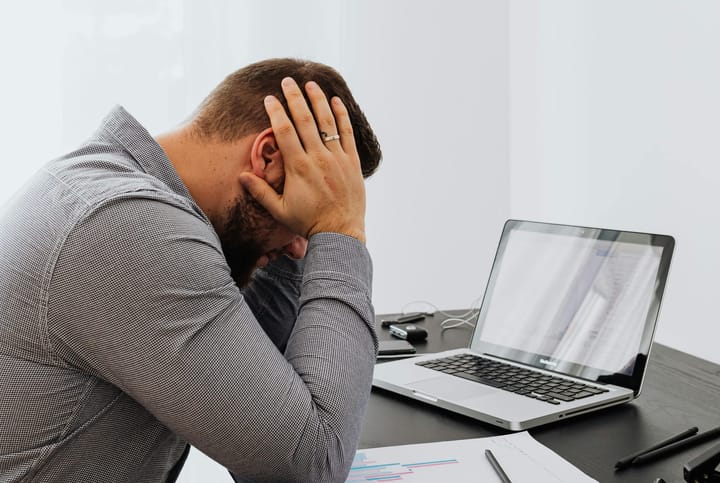The power of microbreaks: Boosting mental recovery and productivity at work

The fast-paced work environment has unintentionally created a silent pressure to maintain constant productivity. This can be both mentally and physically overwhelmingly exhausting. However, research consistently shows that working longer can do more harm than good. Taking regular breaks within work sessions can be highly effective in increasing productivity and maintaining a healthier work lifestyle.
Enter microbreaks: short, intentional pauses throughout your workday that can significantly enhance focus and reduce stress. These breaks are brief but extremely powerful tools to maintain peak performance while considering employee wellbeing.
The science behind microbreaks
Microbreaks have been studied by many experts all around the world. Studies have shown that taking regular short breaks can dramatically reduce mental fatigue and improve cognitive function. In contrast, working continuously without breaks can negatively impact energy and concentration, similar to a muscle that becomes fatigued with constant use.
Microbreaks are like mini-reset periods for your brain. Brief pauses when working allow the engaged neural pathways to refresh. The refresh period is used to renourish these pathways which further helps to consolidate memories and maintain attention. Many employees tend to work through the short breaks to reward themselves with a long break afterwards. However, with longer working periods, stress and fatigue accumulate and manifest themselves as burnout and exhaustion which can negate the benefits of long breaks. Frequent shorter breaks are more effective at maintaining consistent performance throughout the day, preventing deep fatigue that requires extended recovery periods.
The power of short pauses
Incorporating microbreaks into your workday has both immediate and long-lasting benefits. Taking 5-minute breaks every hour, they report significantly improved performance with high concentration levels and renewed energy after every break. The breaks ensure stress levels stay within healthy ranges by lowering cortisol, preventing extreme burnout which is one of the most common workplace mental wellness struggles.
Healthier mental wellbeing is only a part of the benefits of taking microbreaks. This technique offers crucial physical advantages as well. Using these breaks to incorporate movement, even for a few minutes, can help prevent long-term physical health issues from prolonged sitting. Microbreaks also allow employees to take their eyes off the screen, reducing eye strain while movement like walking or stretching can help maintain better posture and circulation.
Apart from mental and physical health benefits, microbreaks can enhance creativity and problem-solving abilities. Stepping away from our cognitively heavy tasks can encourage a more relaxed state of mind. This state is more suitable for innovative thinking and creativity. These short mental breaks can provide a fresh perspective thus, profound insights.
Strategies to practice microbreaks
The key for microbreaks to be effective to the highest degree lies in their implementation. The most optimal for most employees is a 3-5 minute break every 45-60 minutes. However, what you do during the short breaks is also important:
- Movement breaks: Stand up, stretching, or taking short walks around your workspace can heavily promote blood circulation and reduce physical tension. Having a few simple yoga poses that can be done near the desk can be as effective too.
- Mindful breaks: Often our thoughts get consumed by our task at hand. Committing to the break, one should ensure both their mind and body are disengaged from the task. Practicing mindfulness like- deep breathing exercises or a few minutes in quiet meditation can help. Gazing out a window can replicate the mental refreshment effectively too.
- Screen-free breaks: The constant electronic stimulus and notifications from the devices bombarding us can be overwhelming for many. Practicing digital detox during the microbreaks can be truly restorative reducing the cognitive load associated with constant connectivity.
- Social breaks: Reconnecting with friends and family, whether in person or virtual, can boost mood and combat isolation. Catching up with loved ones in the microbreaks can not only renew focus, it can strengthen social bonds as well which ensures a strong social support system.
Microbreaks in the workplace
For HR leaders and managers, fostering a workplace culture that embraces microbreaks can lead to significant improvements in employee morale. There are several ways leaders can incorporate and encourage microbreaks within the workplace:
- Establishing dedicated relaxation areas: Having separate spaces dedicated to breaks and relaxation is important. Ensure accessibility to the space at all times to ensure employees can take advantage of it.
- Company-wide Break Reminders: Having regular reminders on company devices to take breaks can be highly effective in the workplace. Not only will employees remember to take microbreaks, but taking time off with peers can help employees let off some steam with a quick chat.
- Organizing Group Activities: Scheduling one or two group breaks in the workday can boost the effectiveness of microbreaks. These could be simple stretches or yoga sessions that engage the muscles of the body.
These are a few ways to incorporate microbreaks in the workplace. However, every team is unique and has a different set of needs. HR leaders and managers should circulate forms and collaborate closely with employees to understand and assess the various issues in the workplace, eventually, coming to a wellness solution to combat it.
Human productivity and mental performance are still a heavily understudied field. There are many aspects we are yet to understand, however, the more that is revealed one thing is certain- regular mental recovery becomes increasingly clear. Microbreaks are one approach to using that knowledge to maintain peak performance while protecting employee wellbeing. By taking a few minutes every hour to reset and refresh, employees can achieve better results while feeling more energized and engaged.
Incorporating one or two structured microbreaks in the day can be enough to observe the difference in focus and energy levels. The goal is not to work continuously and tirelessly but to work effectively with the best results. In the long run, these small investments in mental recovery can lead to significant improvements in both workplace satisfaction and performance.
FAQs
Won't taking breaks every hour make me fall behind on my work?
Research shows that microbreaks increase overall productivity by up to 13% by maintaining peak mental performance throughout the day.
How can I remember to take microbreaks when I'm busy with deadlines?
Free apps like Stretchly or Break Timer can automatically remind you to take breaks, making it effortless to maintain a healthy work rhythm.
Is a 3-5 minute break long enough to make a difference?
Yes! Studies show that even brief breaks allow your brain to reset its attention span and reduce mental fatigue, similar to how interval training works for physical exercise.



